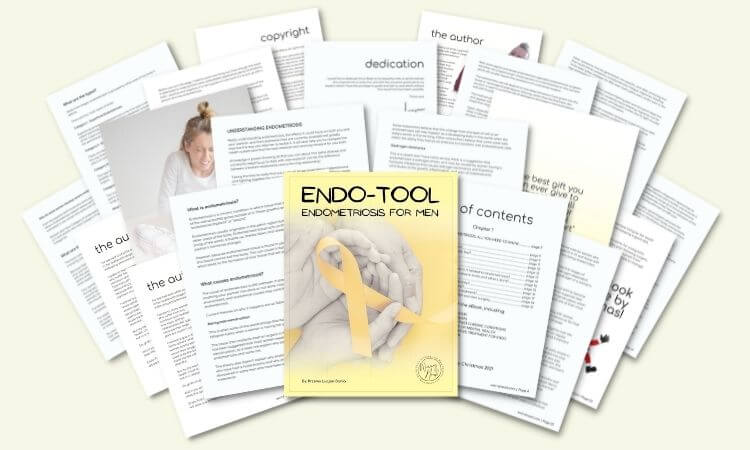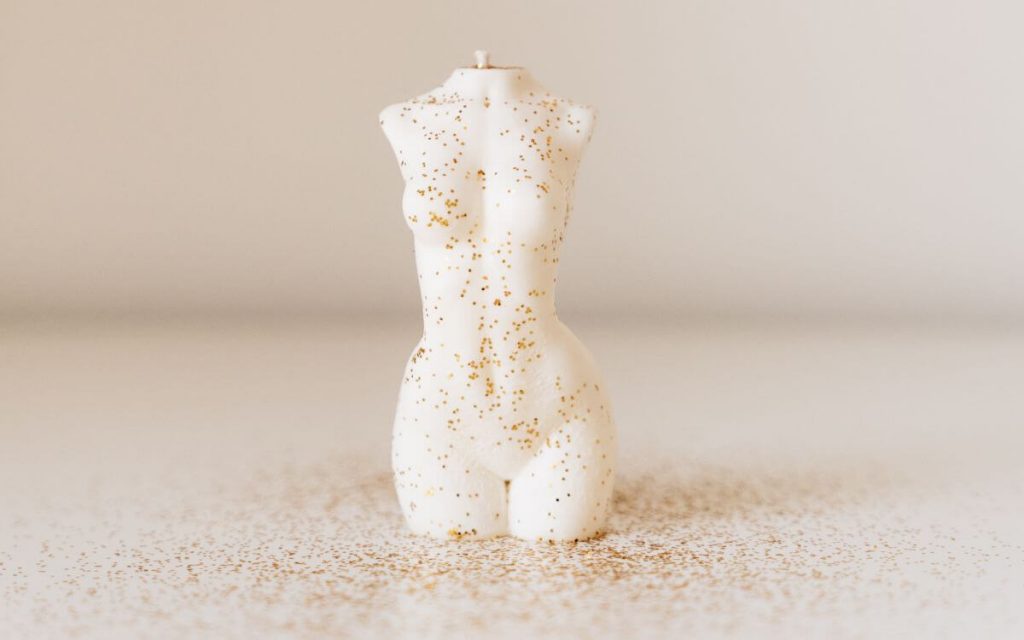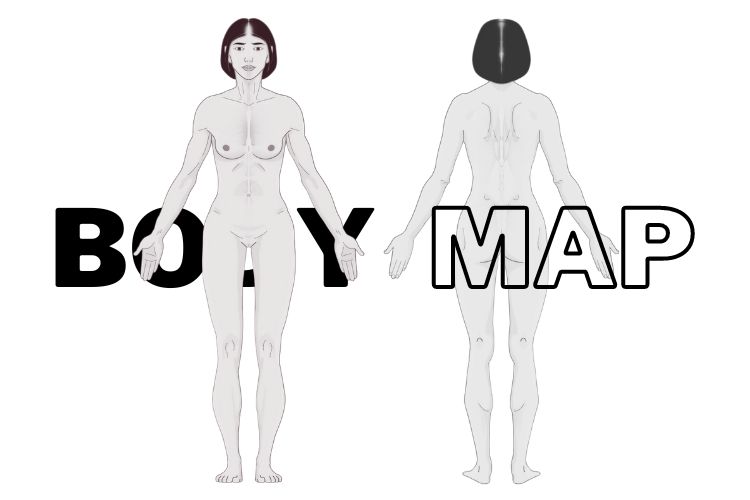Body map.
I’ve seen firsthand my wife battle two chronic conditions – endometriosis and fibromyalgia. It took me a while to understand seeing her in agony what to do and what to say.
It wasn’t always easy for me to believe her invisible symptoms, but fast-forward some years, I started writing this blog, began my research, and learned. I even created a printable body map.
I have learned that living with chronic illness is a journey that many people around the world face. Chronic pain is one of the most common symptoms of chronic conditions, and it can significantly limit a person’s ability to carry out their day-to-day life.
Body mapping is a useful tool that patients can use to track their painful locations, and it can also help healthcare professionals to better understand their patients’ symptoms.
In this article, I discuss what body mapping is and how it works. I will even offer a free printable body map for you (or your ill partner) to use.
What is body mapping?
Body mapping is a process that involves drawing an image of the human body and marking the locations of chronic pain or other symptoms. This image can be used to track changes in pain levels and identify patterns in pain locations over time.
Chronically ill people can use body mapping to better understand their own pain, and at the same time can help healthcare professionals identify areas of the body that are affected by a particular disease or condition, and better understand how to respond to it.
In both of my wife’s cases, her primary condition – stage 4 endometriosis, and her secondary condition – fibromyalgia disorder, it was easy for her to show how each of the above chronic conditions affects her, from head to feet.
Her life became severely affected by fibromyalgia and endometriosis. I wanted her family and doctors to learn how she felt from day to day, and to change their negative attitude toward her.
They needed to access this visual content. It felt like we were their teachers and they were our students.
How does body mapping work?
Generally, the process of body mapping begins with a blank image of the human body. Usually, chronically ill people draw to mark areas where they feel sensitivity, discomfort, or pain.
The image is then used to track changes in pain levels over time. People can color-code their pain locations to help identify patterns, such as whether pain tends to occur on one side of the body or in certain organs.
For my wife, she maps it yellow for endometriosis, and purple for fibromyalgia. Of course, you can color it the way you like it.
Allow me to explain this better in the following paragraphs…
Body mapping of endometriosis.
Endometriosis is a chronic disease in which tissues similar to the ones that are in the uterus begin to grow and spread beyond the womb.
In healthy women, menstruation doesn’t give them much trouble, but with endometriosis, they bleed heavily, their periods are excruciatingly painful, and these women also have painful cramps outside their menstrual cycle.
Women with endometriosis usually map their painful areas around the pelvic region, radiating downwards to one or both legs, sometimes even the upper side and a shoulder. They may also experience pain in the lower abdomen and back, or pretty often during sexual intercourse.
If you want to learn more about endometriosis, I wrote an “Endo-Tool, Endometriosis for Men” e-Book.
You can get the 1st Chapter of the e-Book for FREE, and if you like it, you’ll get a Whopping 33% Discount on the Whole Book, plus discounts on other helpful tools. You have nothing to lose but a lot to gain!
The first chapter alone contains all the comprehensive medical knowledge about endometriosis, including:
- What is endometriosis?
- What are the symptoms?
- What causes endometriosis?
- What does endometriosis look like?
- What are the stages?
- What are the types?
- What is adenomyosis and how is it related to endometriosis?
- Why do some women develop severe endo and others don’t?
- Does endometriosis cause infertility?
- How is endometriosis diagnosed?
- Do types and stages affect the treatment?
- Recurrence of endometriosis after excision surgery.
FREE Chapter of “Endo-Tool”
Endometriosis e-Book for Men

Body mapping of fibromyalgia.
When it comes to fibromyalgia, that’s a different subject…
Fibromyalgia is a chronic disorder that causes widespread pain and other symptoms such as problems concentrating and brain fog.
With fibromyalgia, the human body reacts differently, the pain can take different types, including skin, muscles, joints, nerves, or even headaches and migraines.
To map fibromyalgia pain is more challenging than endometriosis alone.
If you want to learn more about fibromyalgia, I wrote a “Fibromyalgia for Caring Partners” e-Book.
You can get the 3 First Chapters of the e-Book for FREE, and if you like it, you’ll get a Whopping 33% Discount on the Whole Book, plus discounts on other helpful tools. You have nothing to lose but a lot to gain.
These chapters alone explain how to accept the new normal, and understand fibromyalgia, and its diagnosis. They include:
- The new you.
- The new her.
- The new reality.
- Introduction to fibromyalgia.
- What is fibromyalgia?
- The early days.
- When you first realize something is wrong.
- Spotting the signs that something is wrong.
- Coming to terms with a chronic illness.
- The role of partner in fibromyalgia.
- The process of getting diagnosed.
Get Your 3 FREE Chapters!
Fibromyalgia for Caring Men

Body mapping of endometriosis and fibromyalgia.
As you already guessed, my wife suffers from both conditions. They often overlap. Usually, the first symptoms start with endometriosis, and they are slowly being
Fibromyalgia seems closely connected with endometriosis because as many as 31% of women have both. They wind each other up so to speak, so to mark precisely all the areas of pain can seem like an impossible task.
But it’s possible. Simply use yellow for endometriosis and purple for fibromyalgia, and when pelvic pain is caused by both conditions, mix them together.
You may find that the whole body map will be covered, but so be it – it reflexes how it feels!

Why is body mapping important?
Body mapping is an essential tool for patients and healthcare professionals to monitor chronic pain locations and symptoms.
By tracking changes in pain levels, chronically ill people can better understand their pain and develop strategies to manage it. Healthcare professionals can use the data from body maps to identify patterns and tailor treatments to specific areas of the body.
Body mapping is also an opportunity for patients to take an active role in their own health and wellness.
I think this is the best explanation I can give you. You scan the body from top to bottom, back to front in order to understand the symptoms of a particular chronic condition better.
Free printable body map!
To help you get started with body mapping, I have created a free printable body map. The map includes the outline of a human body from the front and back and space for you to label and color-code your pain locations.
Download the free printable body map below…

Using a body map to track chronic pain.
Using a body map to track chronic pain can be a useful tool in managing and understanding the condition.
Here are some steps to follow:
- Normally, you would have to create a body map in order to mark the painful areas. You would have to draw an outline of the human body, front and back, and label the major body parts. But I’ve done it for you… You’re welcome!
- You can simply mark the pain areas. Use different colors or symbols to mark the areas where you experience pain. You may also want to label the areas with a brief description of the type of pain you feel (e.g., sharp, dull, throbbing).
- Ideally, you should also rate the pain. Normally, people use a scale from 0 to 10 to rate the intensity of the pain in each area. But I have learned from observing my wife, that such a scale seems, well, false… It should be a scale from 3 to 13, as the pain is always present.
- Note the duration of how long the pain lasts in each area, whether it is constant or intermittent, and whether it is getting better or worse.
- You should record triggers in order to avoid them in the future. So, note any activities or events that seem to trigger or exacerbate the pain.
- Share your map with your doctor or another healthcare provider to help them understand your pain and develop a treatment plan. You can also show it to your friends and family.
- Update the map regularly. Note if there are any changes in your pain, including new areas of it, changes in intensity, or new triggers. Keep tracking your symptoms for a minimum of 3 months to notice any patterns or similarities.

Wrapping it all up!
To finish off, I wanted to wrap things up a little. Here’s my summary…
Body mapping is a process that involves drawing an image of the human body and marking the locations of chronic pain or other symptoms.
It is a useful tool for patients with chronic illnesses, such as endometriosis and fibromyalgia, to track changes in pain levels and identify patterns in pain locations over time. It can also help healthcare professionals better understand their patients’ symptoms and tailor treatments to specific areas of the body.
Chronic pain is one of the most common symptoms of chronic conditions, and significantly limits a person’s ability to carry out their day-to-day life. Body mapping is an opportunity for patients to take an active role in their own health and wellness by monitoring their pain locations and symptoms.
As for women with endometriosis, they usually map their painful areas around the pelvic region, radiating downwards to one or both legs, sometimes even the upper side and a shoulder. They may also experience pain in the lower abdomen and back or during sexual intercourse.
With fibromyalgia, pain can take different types, including skin, muscles, joints, nerves, or even headaches and migraines.
Why is body mapping important?
Body mapping is important because it allows chronically ill people to better understand their pain and develop strategies to manage it. Doctors can use the data from body maps to identify patterns and tailor treatments to specific areas of the body.
Overall, body mapping is a helpful tool for those with chronic illnesses to better manage their symptoms and improve their quality of life.
To help you access body mapping, I share with you a free printable body map ready for you to download.

A quick recap on tracking your symptoms.
Using a body map to track chronic pain can help you better understand your condition and communicate your symptoms with your healthcare provider. It can also help you identify patterns in your pain and track the effectiveness of any treatments you are receiving.
To get the most out of body mapping, it’s essential to use it consistently and accurately. Here are some tips for using body mapping effectively:
- Start by labeling and coloring the pain locations on the body map.
- Track changes in pain levels over time by using a color-coded system or notes.
- Note any changes in pain location or intensity, and how they correspond to changes in diet, movement, or other factors.
- Share the body map with your healthcare professional to better understand the location of the pain.
- Use the body map as a tool to communicate with your healthcare professional about the effectiveness of treatments.
- Consider scanning the body map and storing it digitally to track changes in pain location and intensity over time.


About Me
Hi, I’m Lucjan! The reason why I decided to create this blog was my beautiful wife, who experienced a lot of pain in life, but also the lack of information about endometriosis and fibromyalgia for men…
